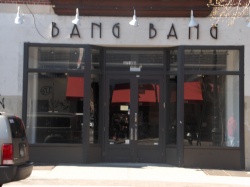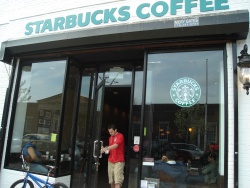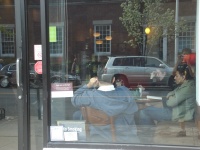DisplacementFrom The Peopling of New York CityThe gentrification of Jackson Heights has created a great paradox -- by marketing the neighborhood as diverse, the real estate industry actually undermines the very diversity it needs to sell the neighborhood. There are subtle –- as well as obvious -– signs of the neighborhood’s gentrification, and from this, we can see the displacement of its diverse communities. With rising real estate values, it becomes more likely that the prices of co-ops, homes, and apartments will not be able to be maintained at an affordable rate for many of the less affluent residents -- most of whom are people of color. These increasing prices, however, tend to remain affordable to white middle-class residents and consumers, whom current real estate marketing strategies target. Herman J., a long-time resident of Jackson Heights, noticed the progressive gentrification of the neighborhood. He stated that rents have risen nearly 30-40 percent in the last few years. He cited the role of Vantage Properties, LLC in displacing residents with rent-stabilized apartments. He said, "They nitpick. They review the leases of residents and attempt to evict them by returning their rent checks. Once Vantage drives out these people, they can then ask market prices for the apartments." Eva K., an eleven year resident of Jackson Heights, has seen four non-white families in her building displaced in the last year because of rising rents. "The rent has increased very much in the last few years," she said. Replacing those families are people like Elena L., who moved to the Historic District a year ago because of its "affordability, ethnic diversity, and energy." The establishment of the Historic District has played a primary role in furthering gentrification, and thus displacement, in the neighborhood. The Historic District is the most expensive region of Jackson Heights, and thus directly contributes to the rising housing costs (Community Greens: Jackson Heights). As with most of Jackson Heights, upper middle class residents, most of whom are white, will continue to be able to afford the rising prices of the Historic District -- as well as throughout neighborhood -- while most minority ethnics will likely be displaced. As such, the Historic District is an almost segregated, completely white area of the neighborhood. As Tom Wetzel states in “What is Gentrification,” one sign of gentrification is the appearance of stores that appeal to people of higher income, stores, which replace the already present bodegas, small appliance stores, Indian restaurants and the like. The appearance Starbucks, for example, which takes the place of little Columbian coffee stores, signifies four things about Jackson Heights: that there are people to whom Starbucks appeals, that there are people in the neighborhood whol can afford Starbucks, that there is competition and likely less profit for older coffee businesses, and that the neighborhood is undeniably undergoing displacement. The survival of Starbucks -- a middle class coffee house that appeals to people of higher income than the norm in Jackson Heights -- signifies the incoming of new residents, who invariably replace many establishment ones. Particularly, the continued success of the newly-opened Starbucks in neighborhood could "drive up rents and push out businesses catering to the lower income Hispanic population" (Frothing Over a Starbucks in Little Colombia). There is evidence of this displacement occurring already. Nokibul Alan, who owns a small 99 cents shop on 37th Avenue, said, "Rents have rose a lot in the last two years. It is making it hard every month to pay the rent." Alan said that if the rents continue to increase at the rate they are, he will be forced to close down his store. What is the proof that the neighborhood is not resisting the displacement of the diverse community that is currently its backbone? The evidence lies in the rising real estate prices. If landlords, developers, or banks wished to stop Jackson Heights from gentrifying and ultimately displacing residents, then certain institutions would have changed. As Wetzer points out, “One way to ensure that the residents are not displaced is to change the ownership structure of the land and buildings." However, landlords, developers, the government, and banks have failed to create a plan or provide institutions to assist ethnic residents in the ownership of property, possibly preventing many of them from having a fighting chance against gentrification and the resulting displacement. In addition to the displacement of minority ethnics, the divisions in the Jackson Heights neighborhood will continue to increase as the process of gentrification continues. As current and potential less affluent, often non-white individuals are priced out of buying homes and property in Jackson Heights, spatial and perceptual divides in the neighborhood will increasingly be framed in terms of economics and class. However, the addition of an unexpected factor may, in fact, disrupt these current processes, leading to an uncertain future for Jackson Heights.
|


